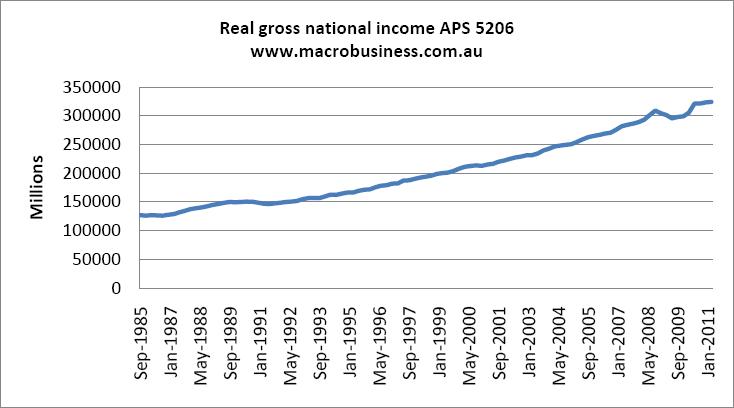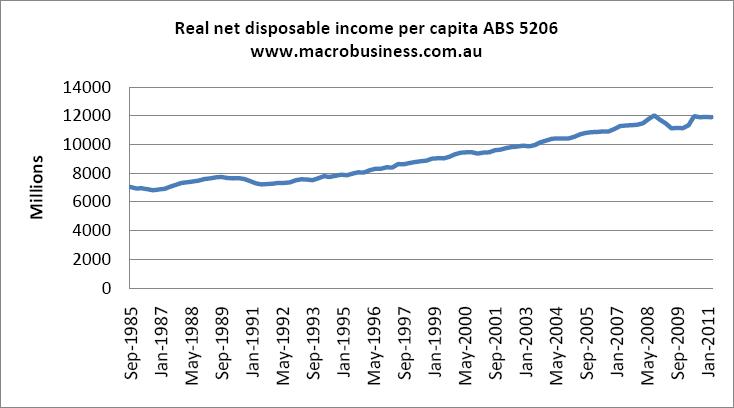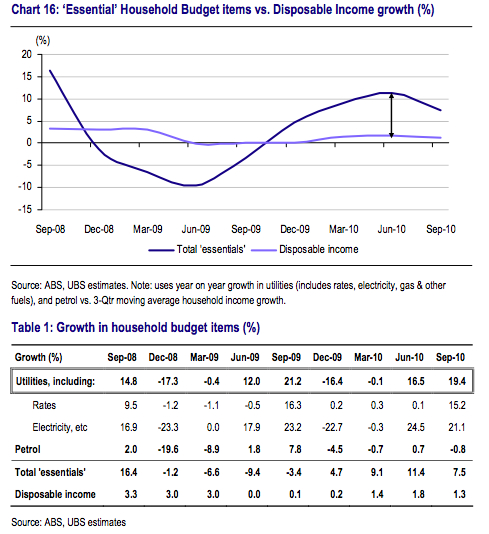From yesterday’s National Accounts, here’s a stab at explaining why, despite the ongoing growth in the economy (ignoring the March quarter hiccup), there are so many folk that are clearly feeling the pinch.
First, a graph of real gross national income:

A few observations here. First, that extraordinary dip in 2008 looks like the way of the future for the Australian economy to me. Not that it will keep falling, rather, that future recessions are likely to be severe income recessions as commodity prices tank. In short, we can expect much higher volatility in the national income than has been the case historically.
You can see, too, that gross national income appears to be forming a new, lower growth trend line. We might theorise as well that this income is now concentrated in fewer hands, as the new growth model of Quarry Australia is less widespread than the old borrow and consume model. But that is a guess, I’ll happily admit.
Next, let’s take a look at real net disposable income per capita:

We see the same volatile pattern but an even less flattering outcome when disposable income is divided per person. Basically, the level per person hasn’t risen since the GFC. As the Unconventional Economist explained yesterday, this is largely the result of high immigration, with more people now sharing the slower growing national income. Not that that is the immigrants fault. Without the higher numbers, GDP transactions and income would be lower too.
This is real income we’re talking about so it’s deflated for rising costs. However, the ABS measure of disposable income is broad to say the least and doesn’t necessarily capture how the relative pricing shifts in the economy are benefiting some and hitting others as the economy’s growth model shifts. For an insight into that, let’s turn to yesterday’s UBS report into mortgage arrears, which offered the following different cut of real income for those must live on the “essentials”:

This is all macro data and clearly doesn’t precisely capture the circumstances on any individual community. It’s also clear that the nation continues to get richer, if at a slower pace, but perhaps a more sustainable one (so long as you ignore China!). But, there are big changes in the trend, shape and distribution of real income.
That catchy jingle from Better Homes and Gardens comes to mind: “Getting so much poorer all the time…”

